Flowering succulents: 5 indoor and 3 outdoor species you can consider growing at home
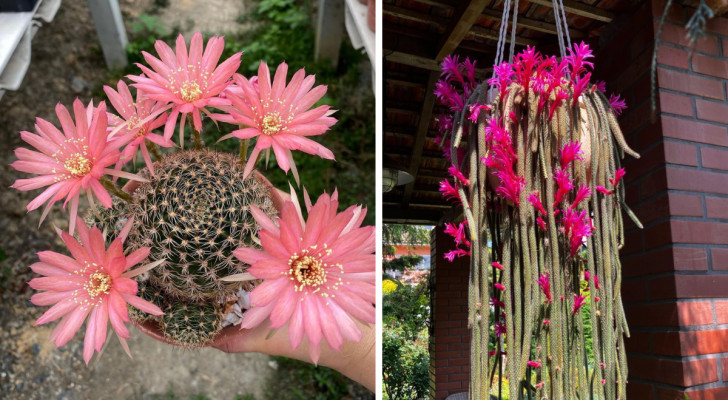
Succulent plants are amongst the most popular plants for growing in apartments and/or in the garden. Succulents are appreciated for their ease of cultivation and the extraordinary decorative display their leaves and flowers present. In fact, some succulent plants produce colorful flowers that give off heady, pleasant scents.
It could take up to 10 or 15 years before a succulent blooms, but, when this happens, the flowers can be truly spectacular and highly varied between species.
If you are thinking of decorating your home and garden with flowering succulents, we suggest 8 of the most beautiful species below:
1. Indoor plants: Lithops
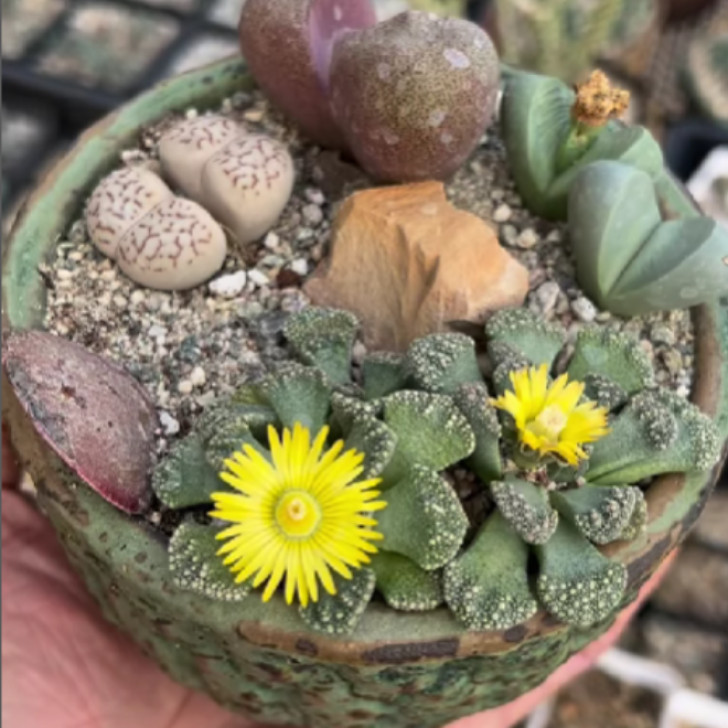
@lithops_yongquanjia/Instagram
Lithops are succulents prized for their stone-like appearance, hence their common name, "Living Stones". Originating from the deserts of South Africa, lithops have two fleshy leaves, "welded together" to form a crack from which the flowers will bloom in autumn (and which look very similar to daisies).
Lithops need a very bright, well-ventilated environment, ideally facing east or west in summer; they require very little watering, especially in winter (when only a few drops per month will suffice).
Echinopsis
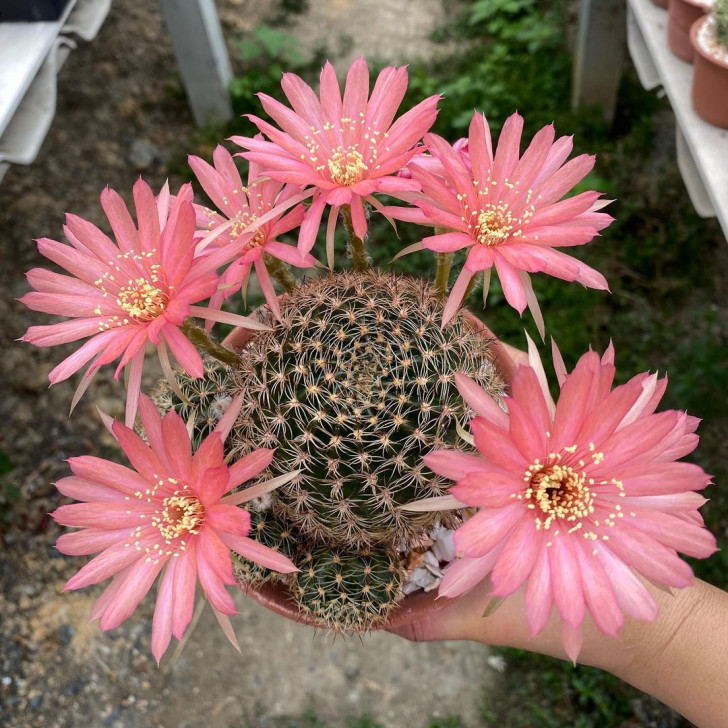
Echinopsis is a cactus that is very commonly found as a houseplant and much admired for its very large, showy flowers; originating in South America, echinopsis is characterized by a globose (spherical) stem that lengthens over time. The flowers can reach up to 20 centimeters in diameter and appear in late spring but only when the plant reaches maturity (at around 3 years of age). The flowers bloom at night and start wilting after only a few hours, often giving off a pleasant scent.
Place echinopsis in bright spot but shield it from the heat and and direct sunlight during the summer. Water every 5-6 days during the summer.
Adenium obesum

Commonly know as the Desert Rose for its drought resistance, or as the Madagascar Oleander for its bright green oleander-like leaves, Adenium obesum is a succulent houseplant that is often grown like a bonsai. Its showy flowers are composed of white, pink or striped stripes (which are also similar to oleandar flowers).
Cultivating this plant can be challenging: it needs well-draining soil and only light watering, especially in winter (where it must be kept in temperatures of no less than 10 degrees C). Place this plant in a bright and sunny spot, protected from drafts.
Mammillaria
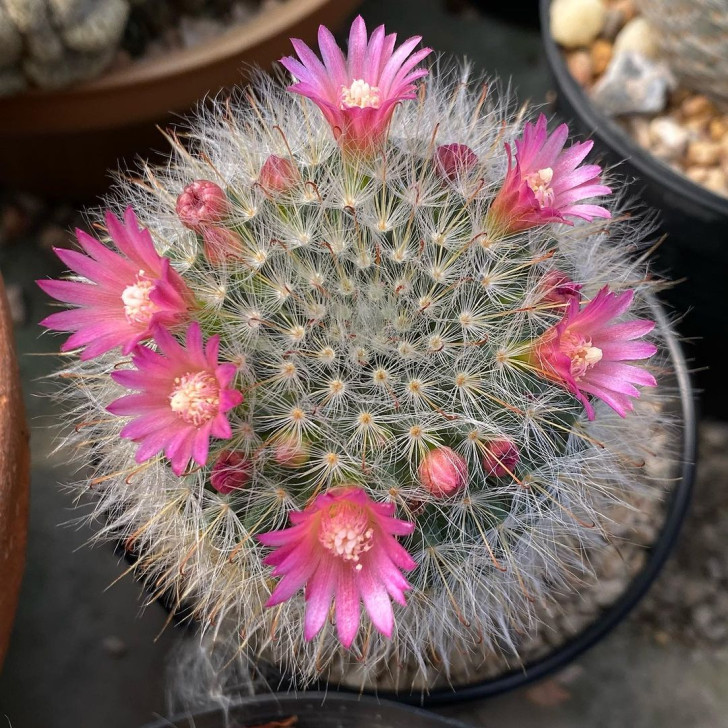
Mammillaria is a genus of cactus native to the southern United States and Mexico, and is suited to living in extreme climates. Its hardiness is due to the spherical or cylindrical stem capable of storing a lot of water and its protecting thorns. The funnel-shaped, diurnal (daytime) flowers come in a great variety of colours - from white to yellow to pink and appear in early spring in most species, in summer in the others.
Mammillaria can tolerate heat well but not the cold. They need to be placed in a very bright place (even in direct sunlight), and need watering only when the soil is dry.
Hoya carnosa
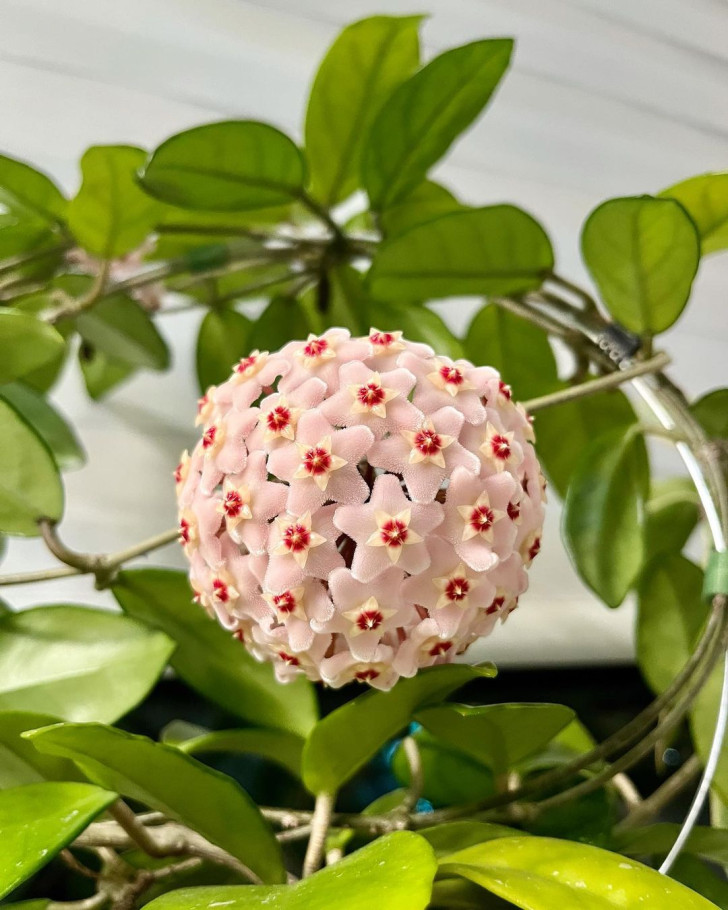
Hoya carnosa, aka the Wax Plant, is renown for its flowers, which emit a pleasant scent, especially after the sun sets. Native to rainforests where it grows attached to trees, Hoya carnosa is an evergreen that flowers in spring, starting from its second year. Its wonderful flowers resemble soft pom-poms of small white or pink flowers.
This plant loves the light but only if it's filtered. It also needs high humidity levels which can be provided by watering it sparingly, but often.
2. Outdoor plants: Delosperma
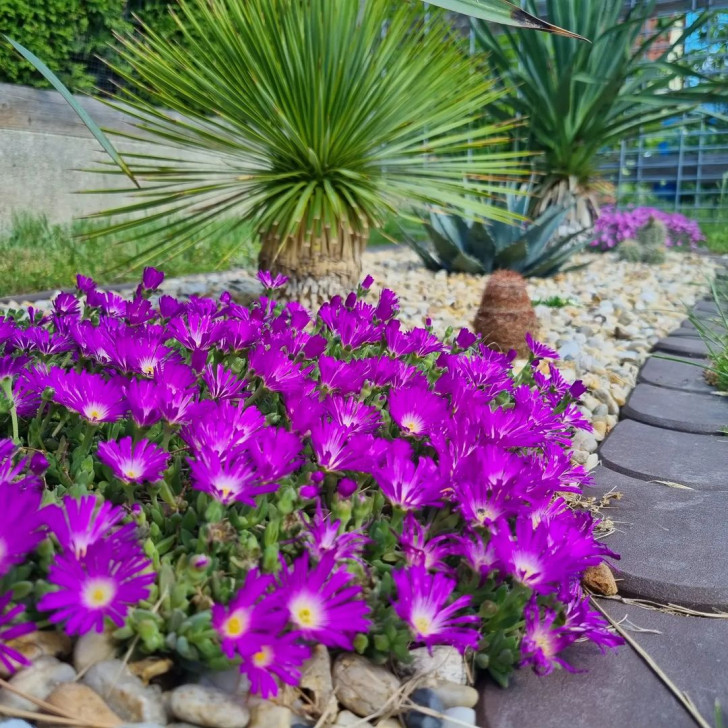
Delosperma is a genus of succulent that is very easy to grow, has very vibrant flowers and can be grown both in pots and in the gardent. Its "creeping" ability makes it perfect for filling up flowerbeds and rock gardens. The flowers are very abundant and differ from one species to another in shape, color and flowering period (which is usually from early spring until October or November).
Delosperma requires a sunny spot and for the flowers to bloom luxuriantly, regularly remove any withered flowers to stimulate the production of new buds. Delosperma is highly drought-resistant and only requires watering every 7-8 days during the hottest periods of the year.
Aporocactus flagelliformis
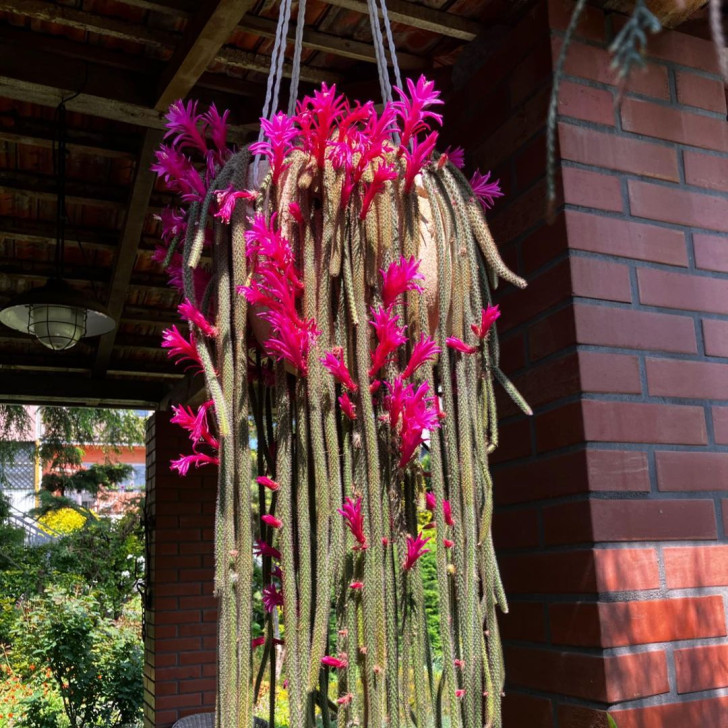
This succulent plant is also known as the "Mousetail" due to the characteristic shape of its stem. This is a creeper cactus with fleshy and tubular stems that will drape elegantly from a pot. In spring, it puts out numerous large pink or red flowers.
The mousetail can be grown in very bright spots, but must be protected from draughts and the wind. It cannot tolerate the cold and requires regular watering - at least 1 or 2 times a week (but first making sure ithat the soil is dry). Avoid water from stagnating by emptying the pot's saucer regularly.
Prickly pear
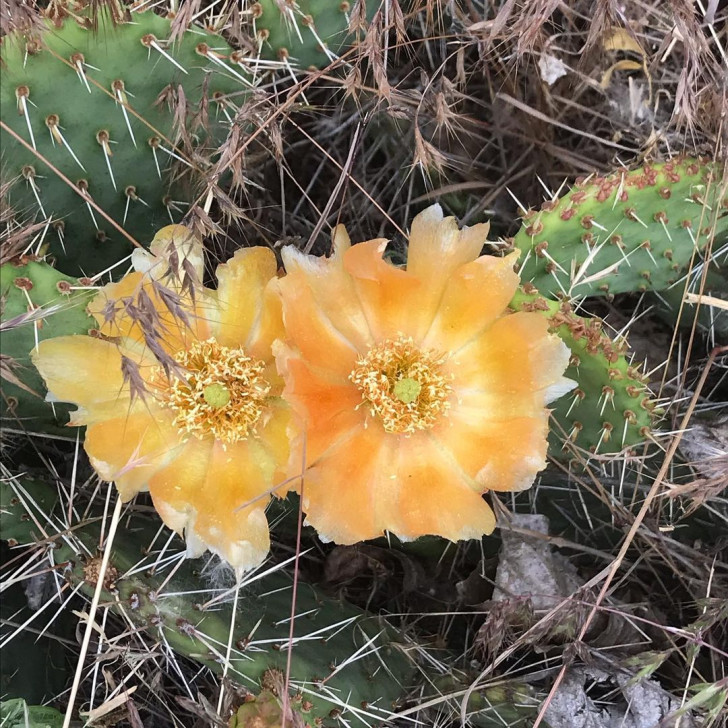
The Prickly Pear is a cactus native to Mexico and was brought to Europe in the 15th century by Christopher Columbus (and owing its name to Columbus' navigational error). This cactus produces fruit (pears) which are consumed with relish by many. The prickly pear grows well in arid and very hot regions, but has adapted well to other climates (becoming treated as an invasive species in some parts of the world, for example, Australia and South Africa).
Cultivated both in pots and in open ground, the prickly pear produces large bell-shaped flowers ranging in color from white to yellow to pink. These flowers give off a sweet and intense scent, attracting pollinators. Flowering occurs in spring and summer and lasts from a few days to a few weeks.
This cactus needs exposure to a lot of sunlight (direct sunlight is fine too), and the soil must be kept moist but not soaked.
Which of these plants would you like to grow at home?